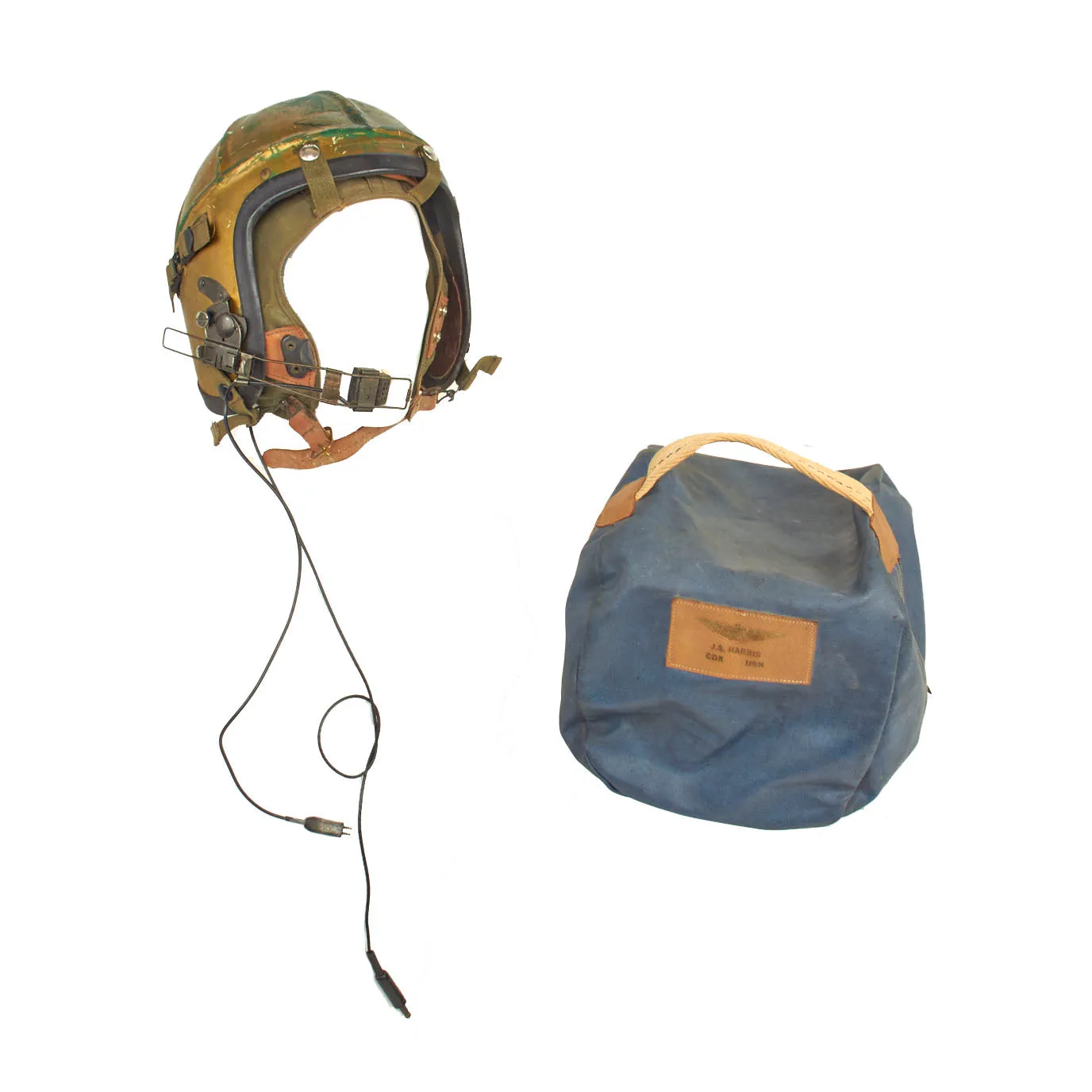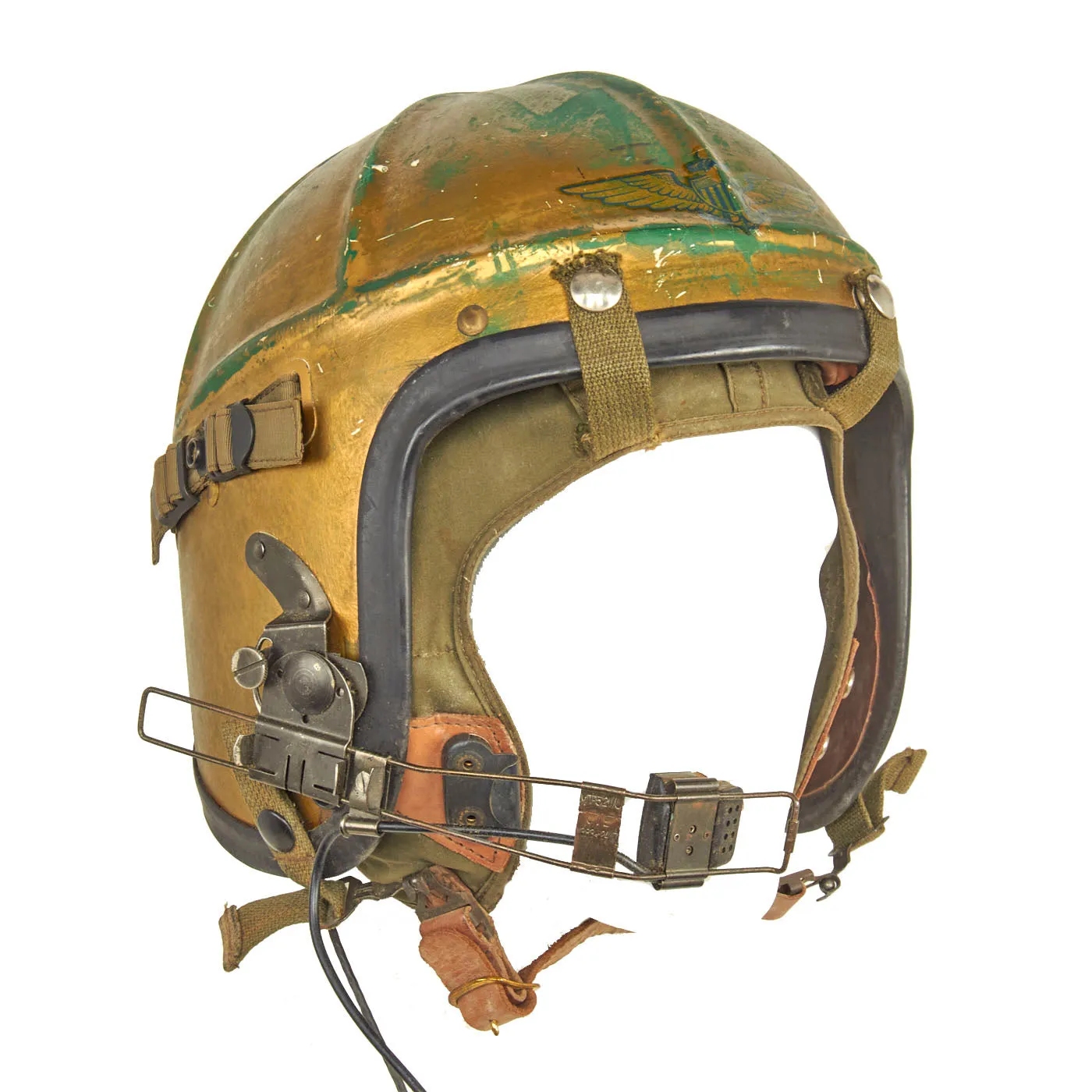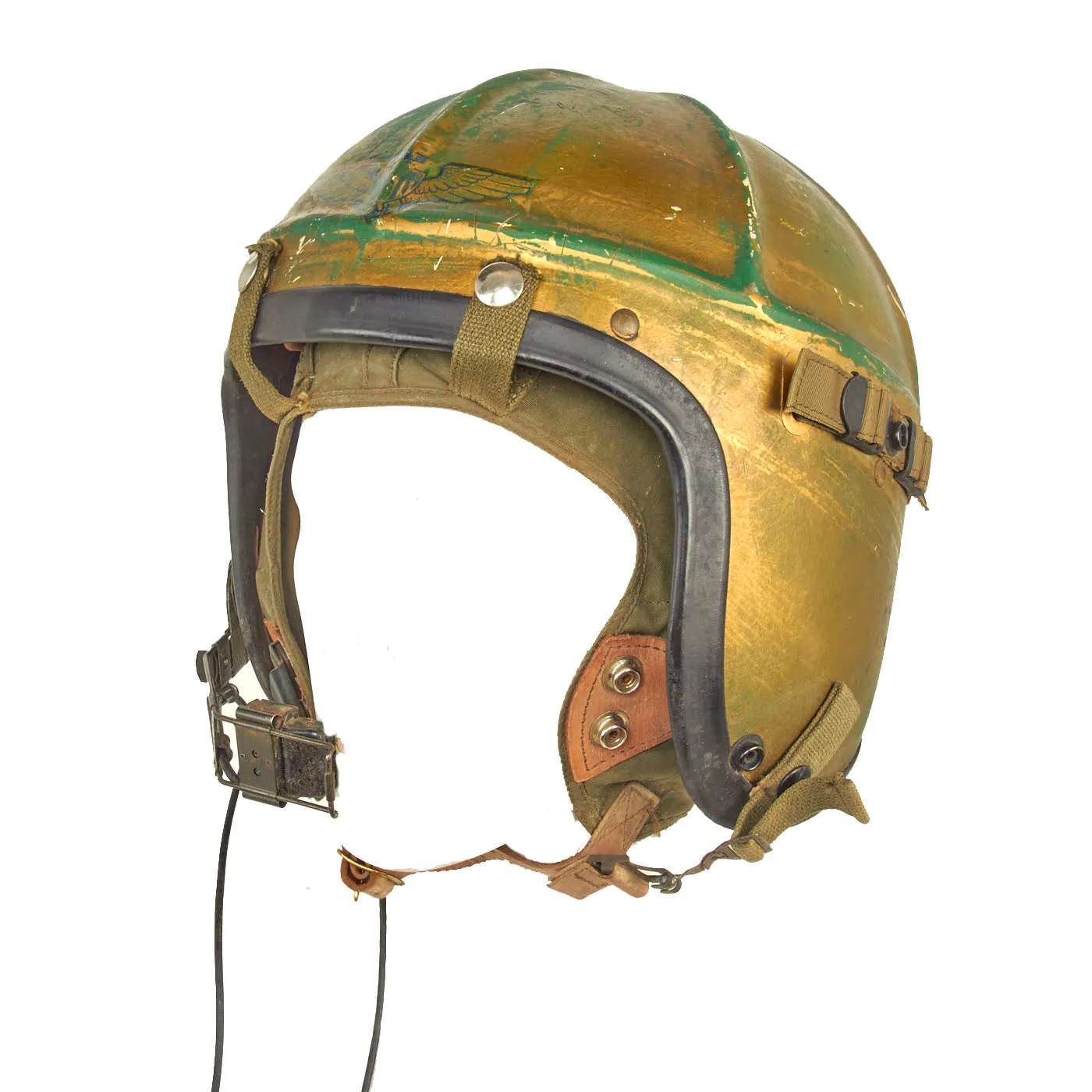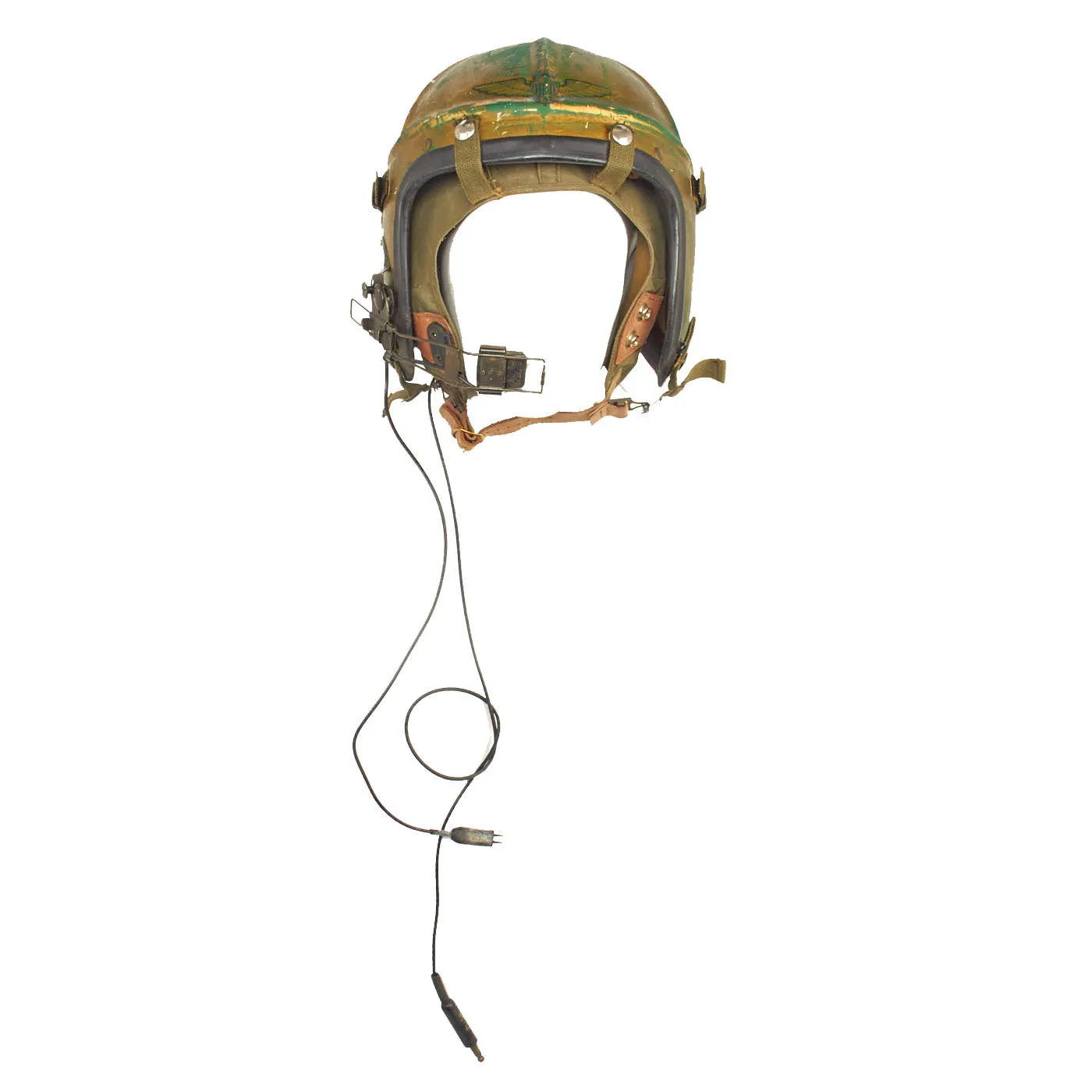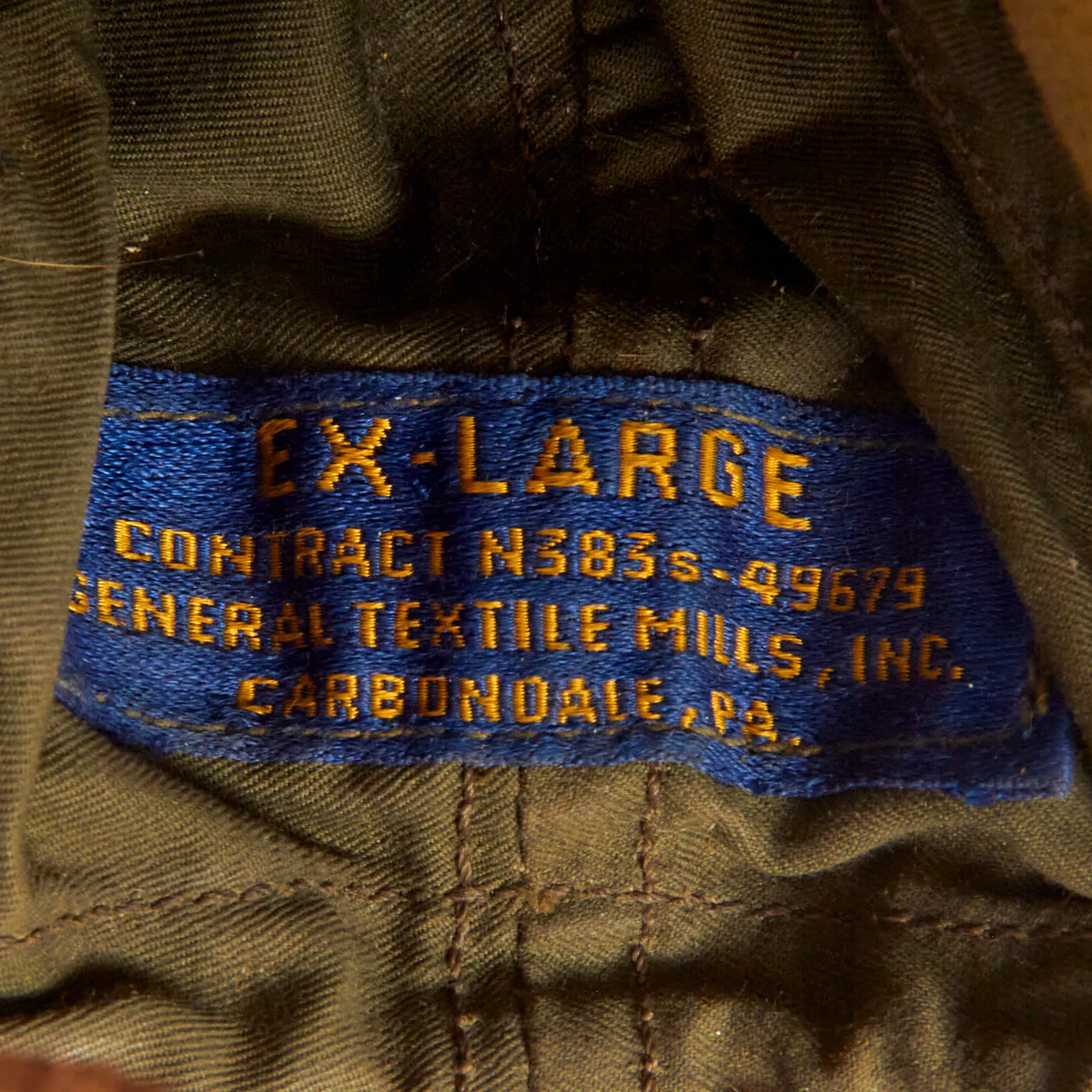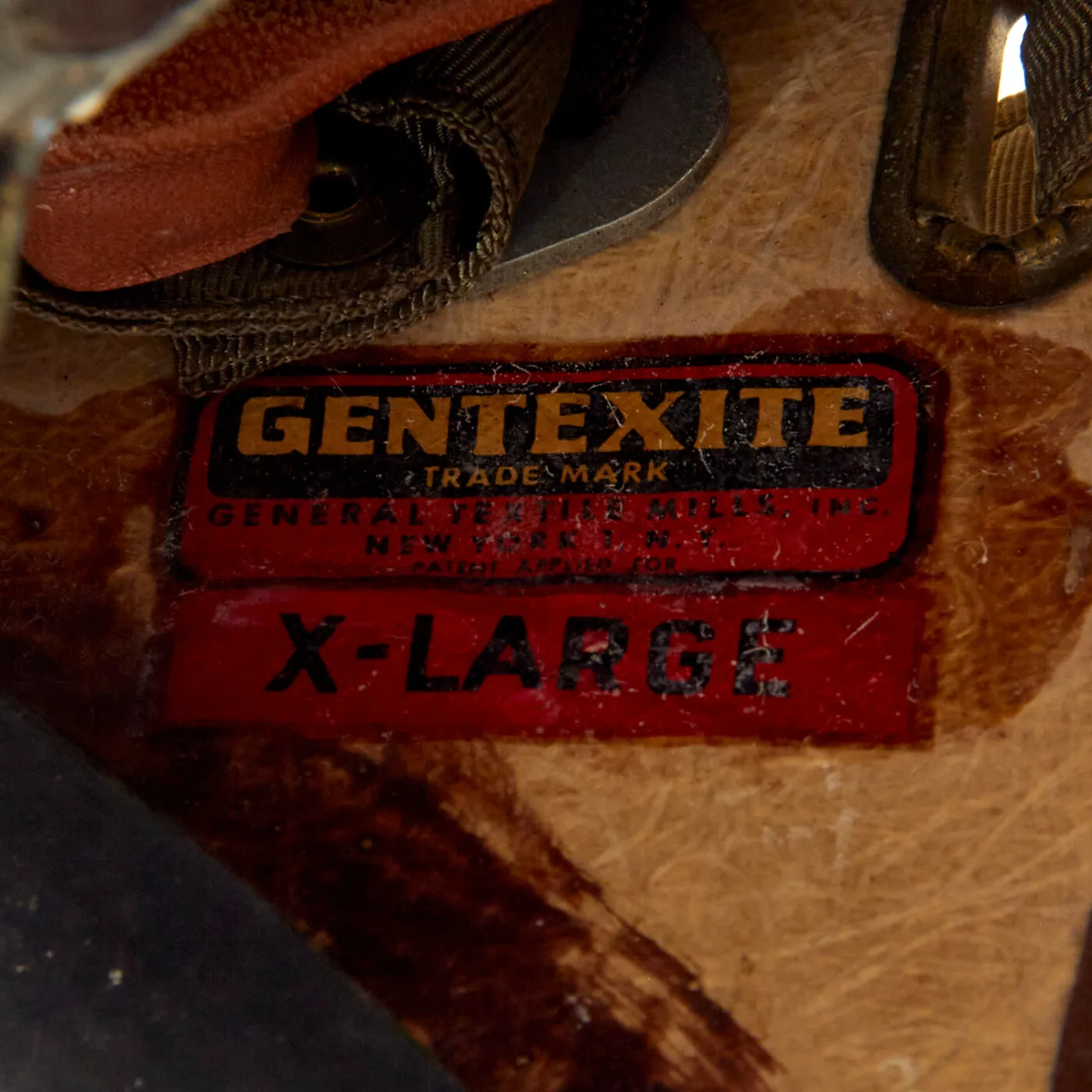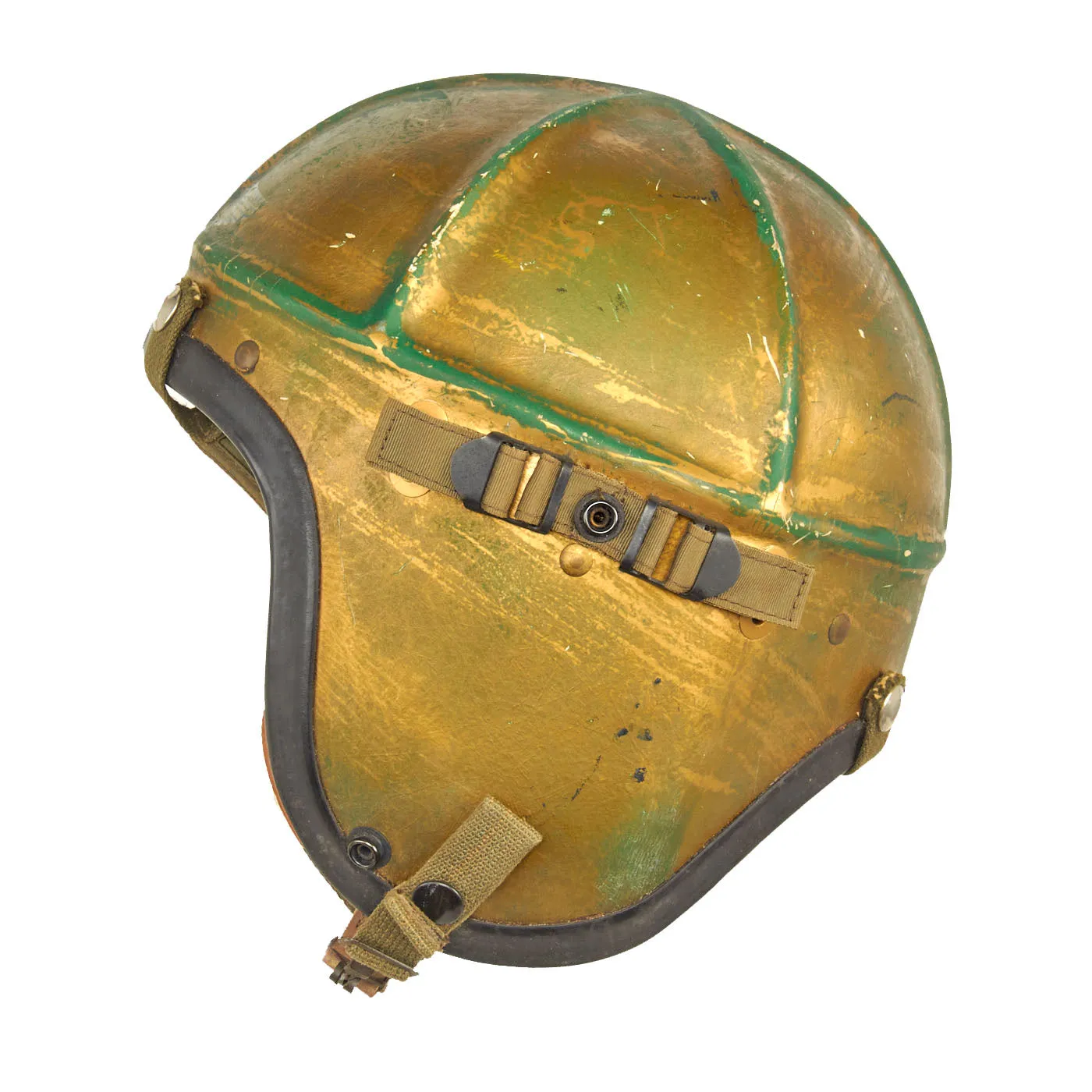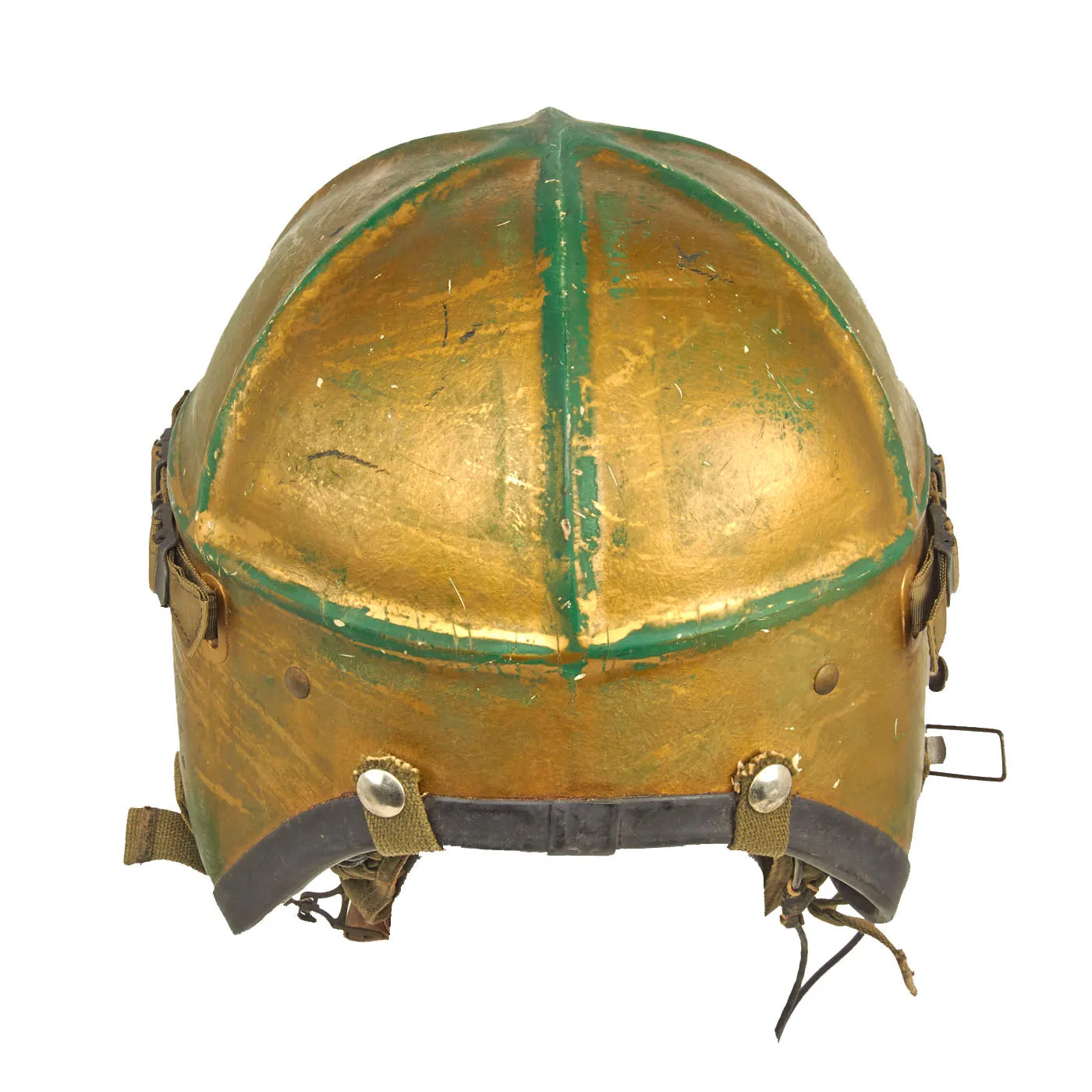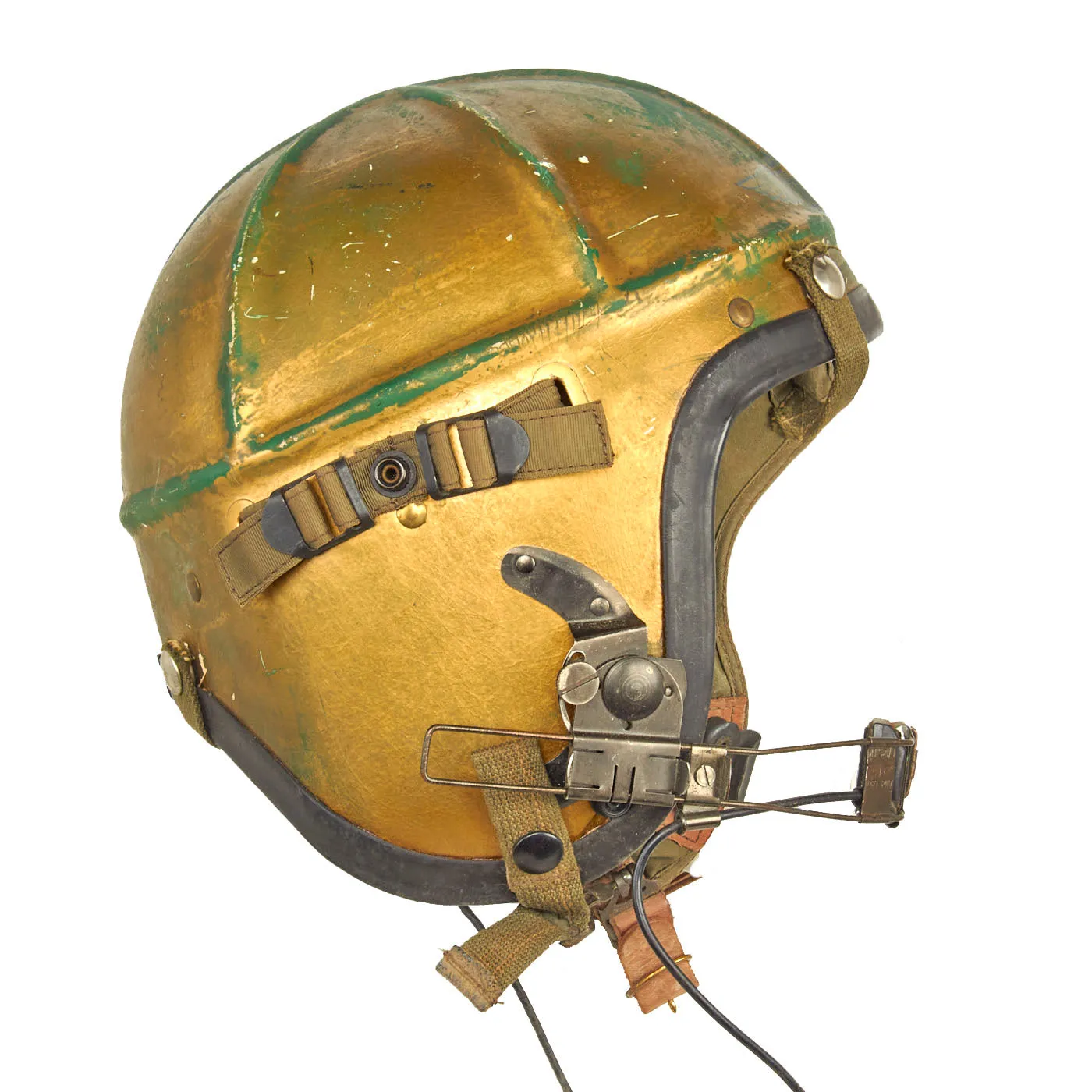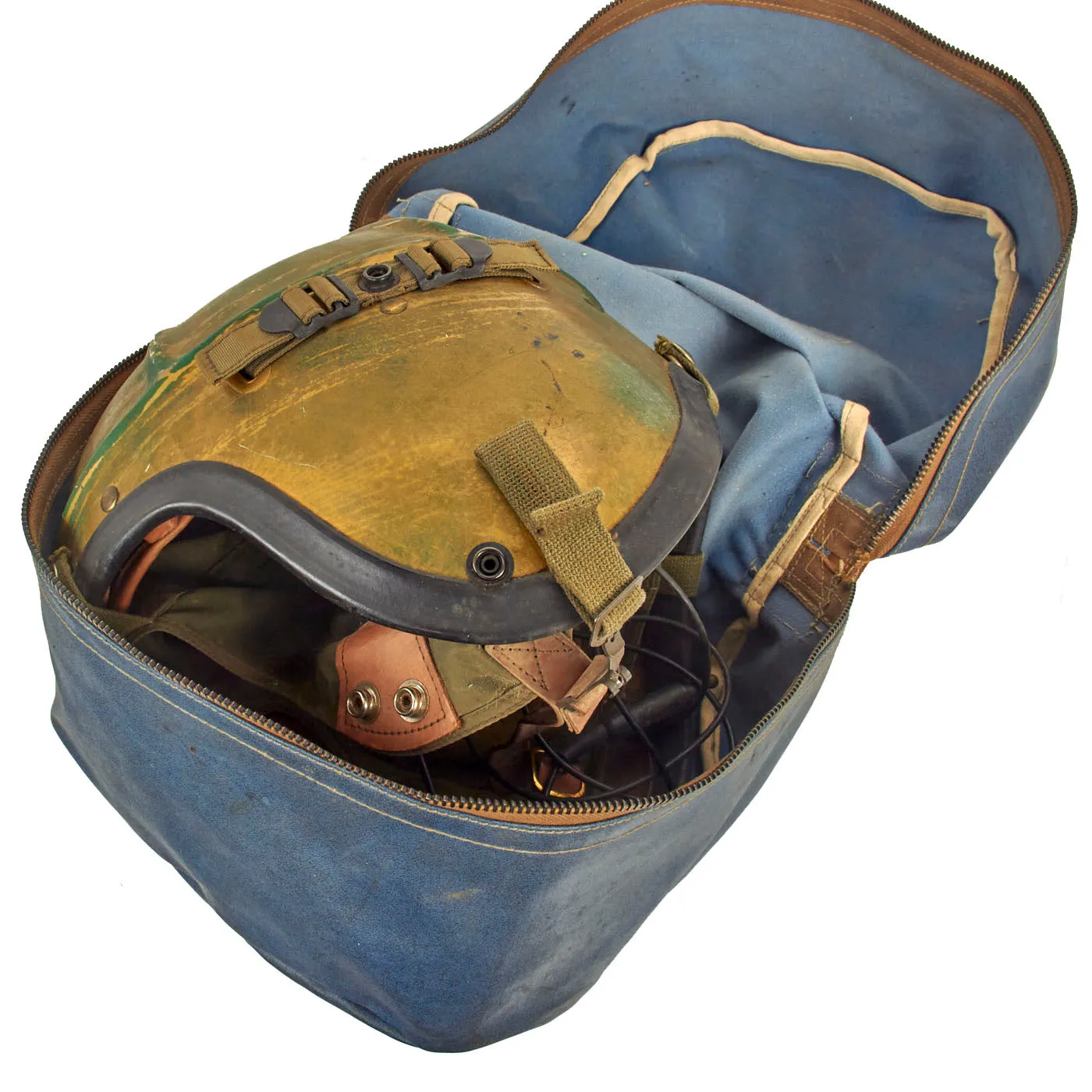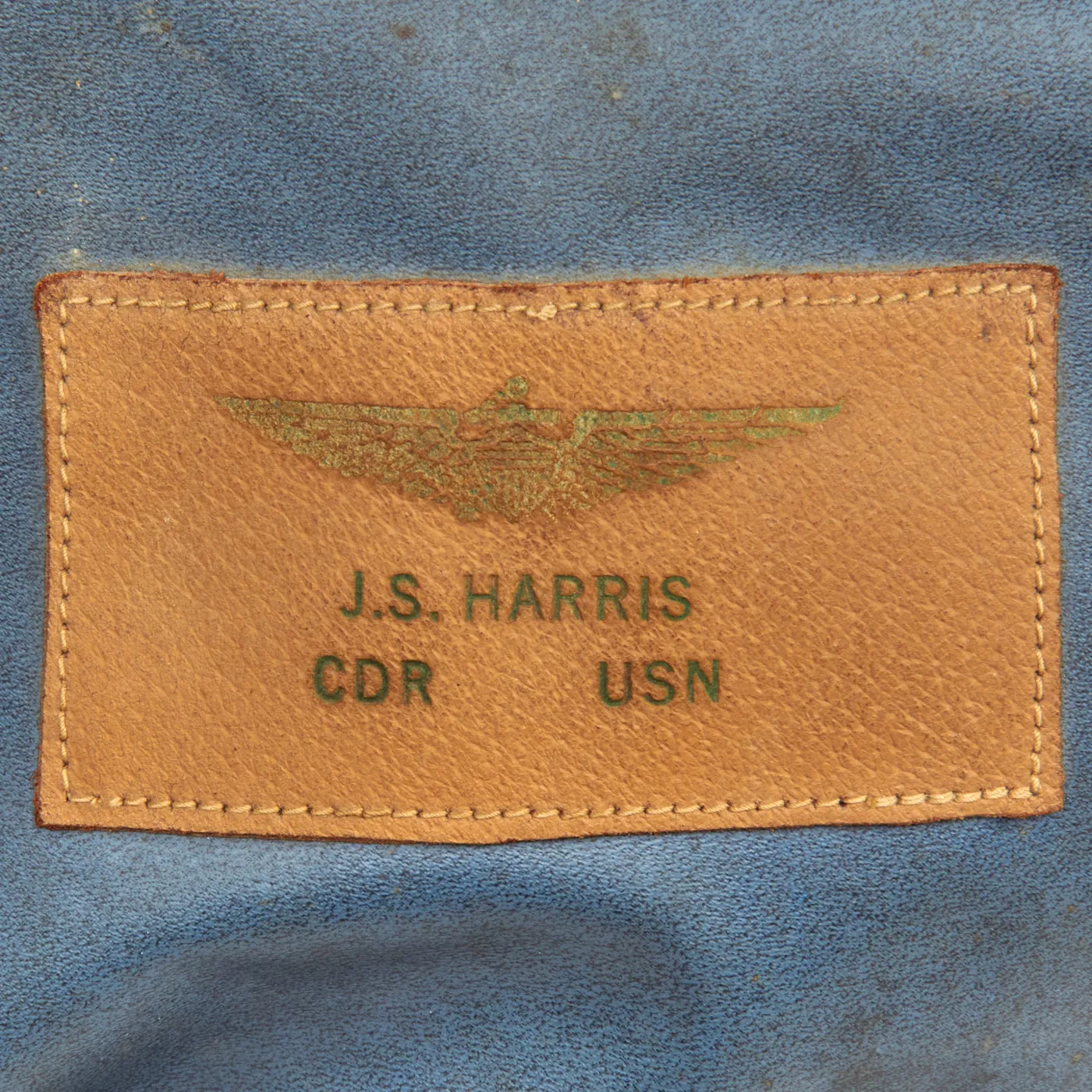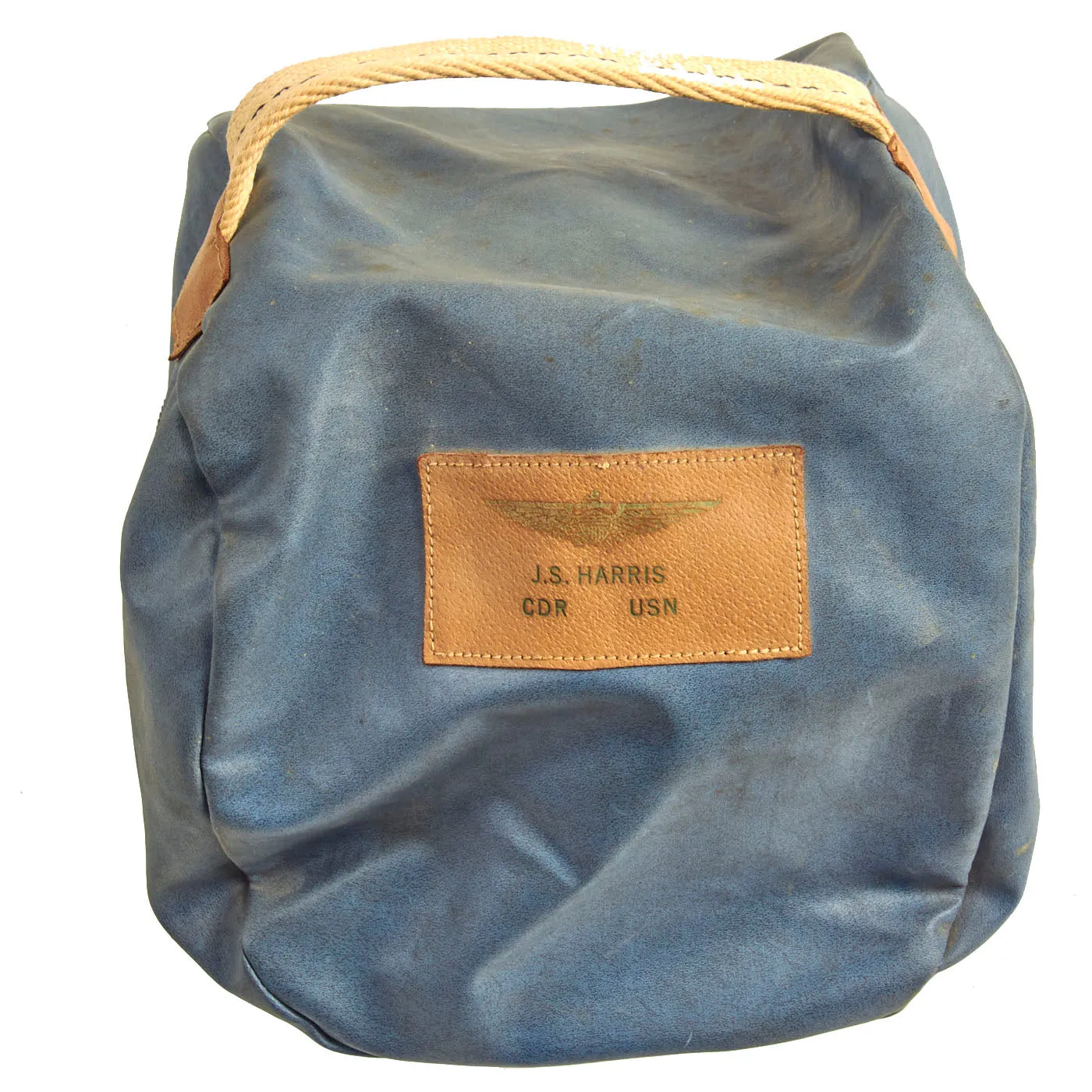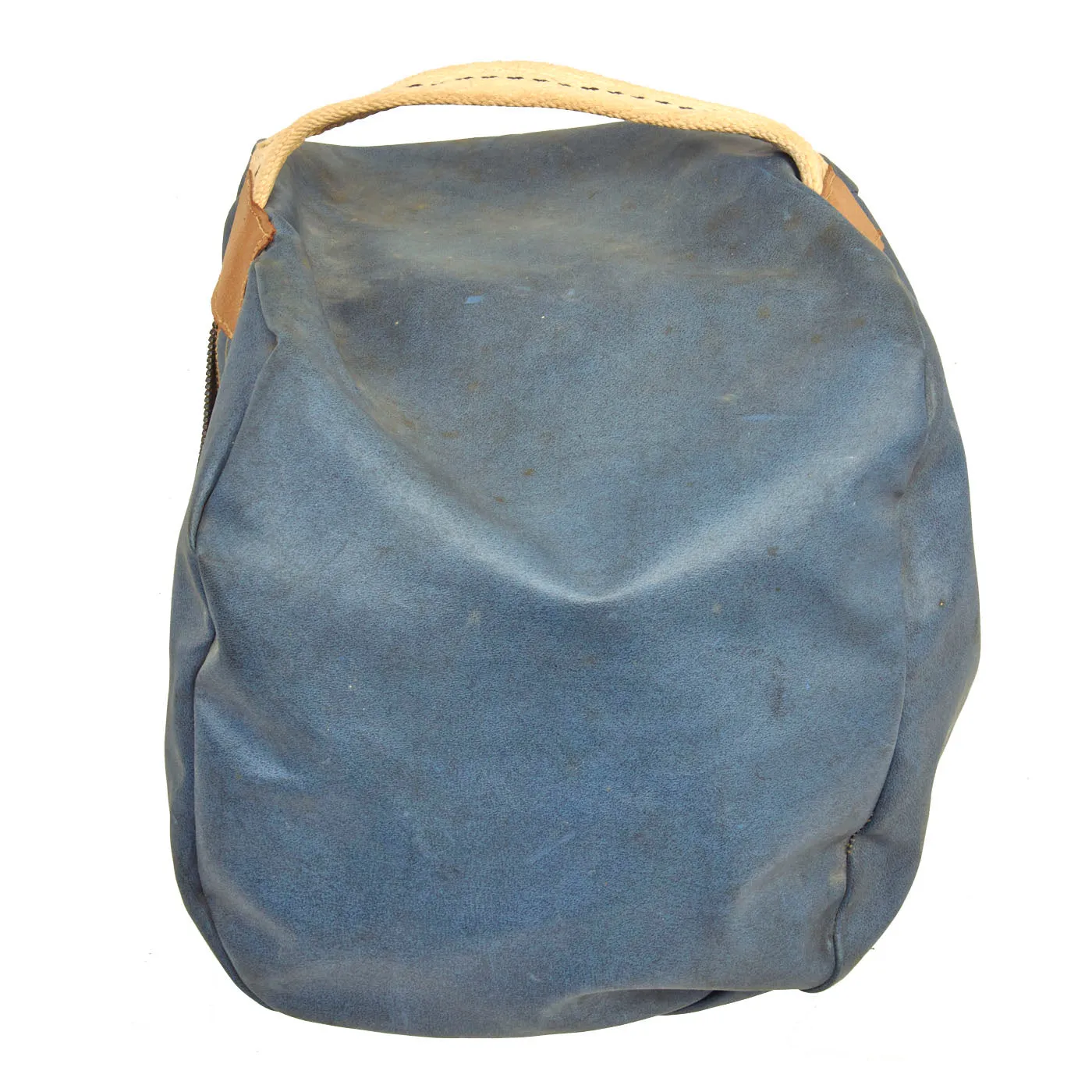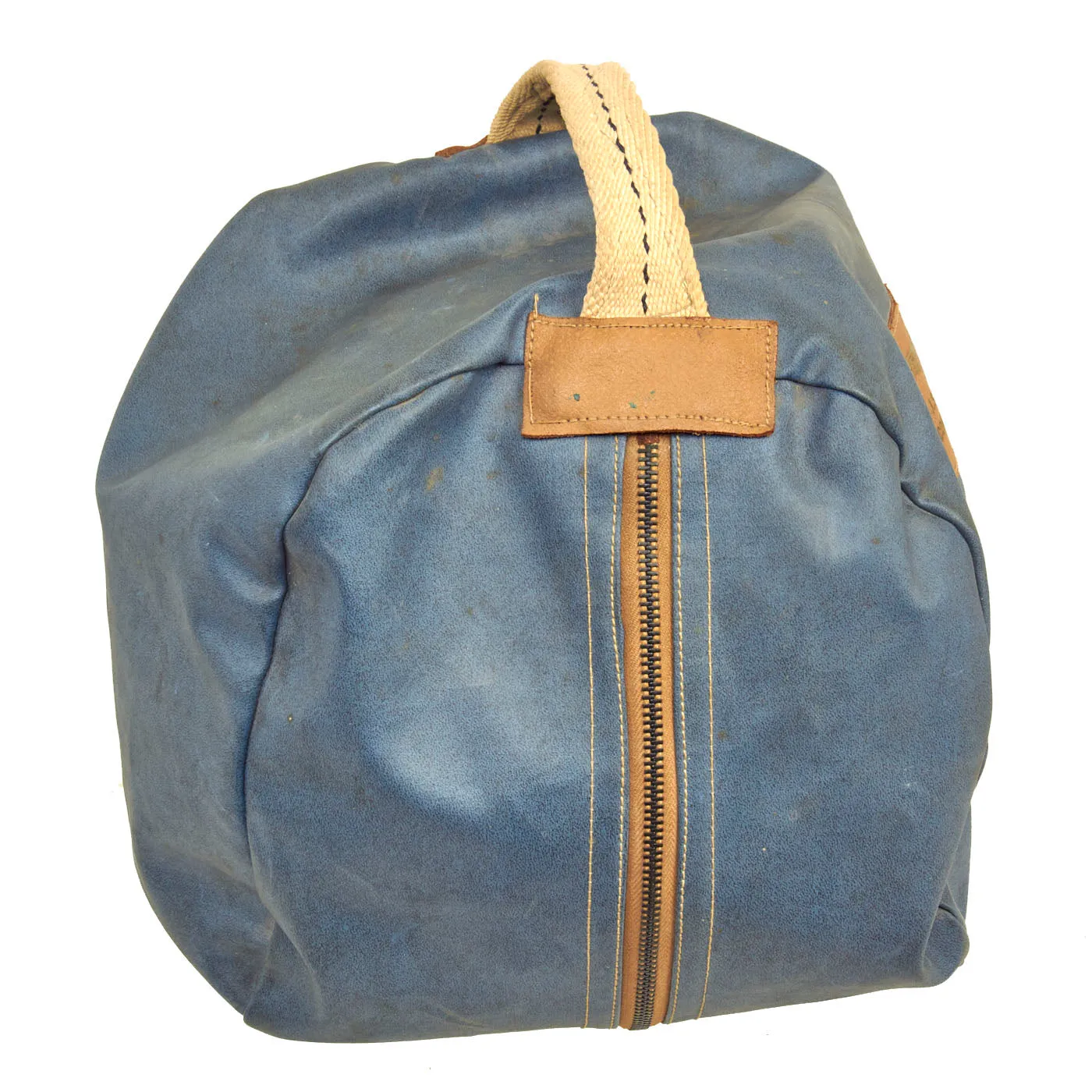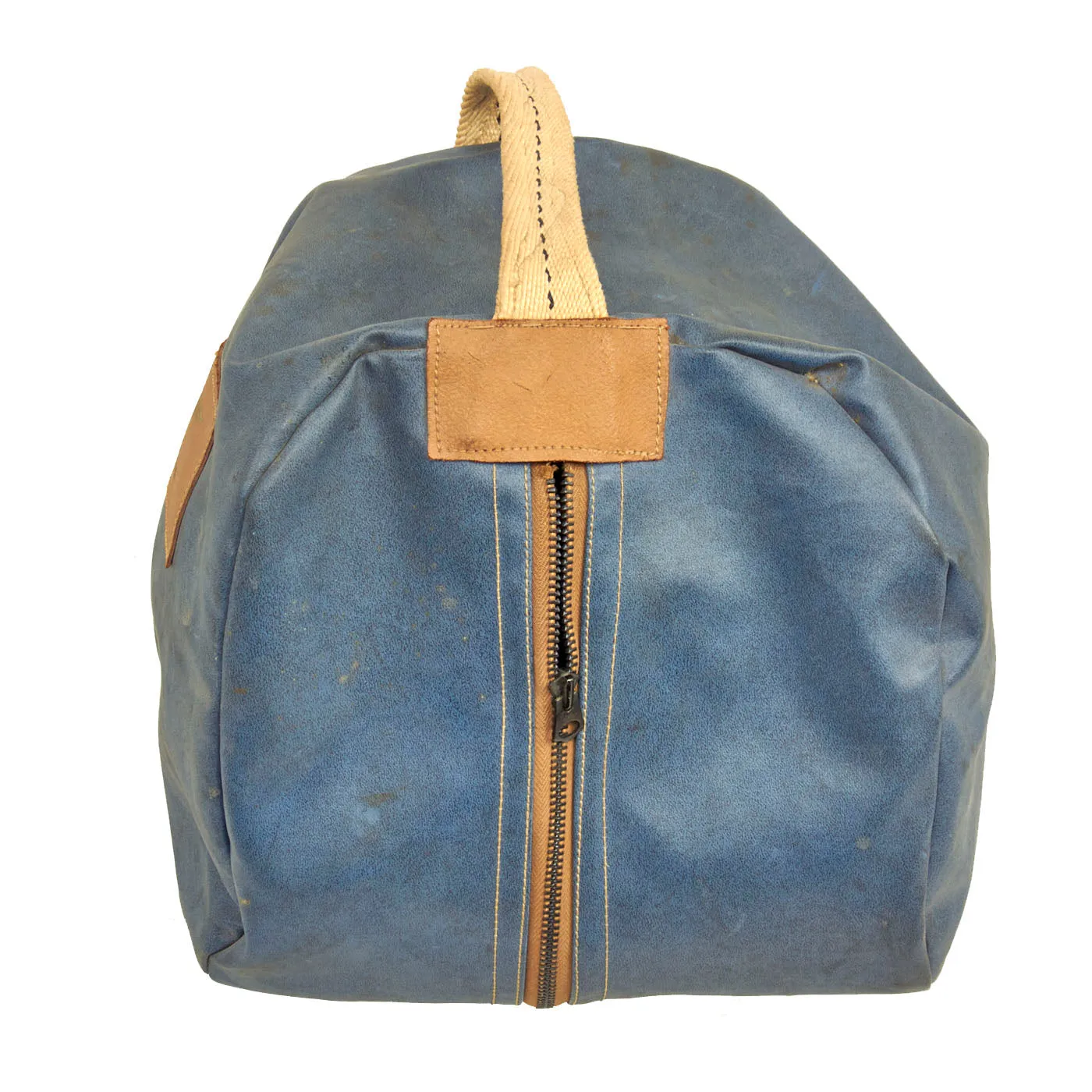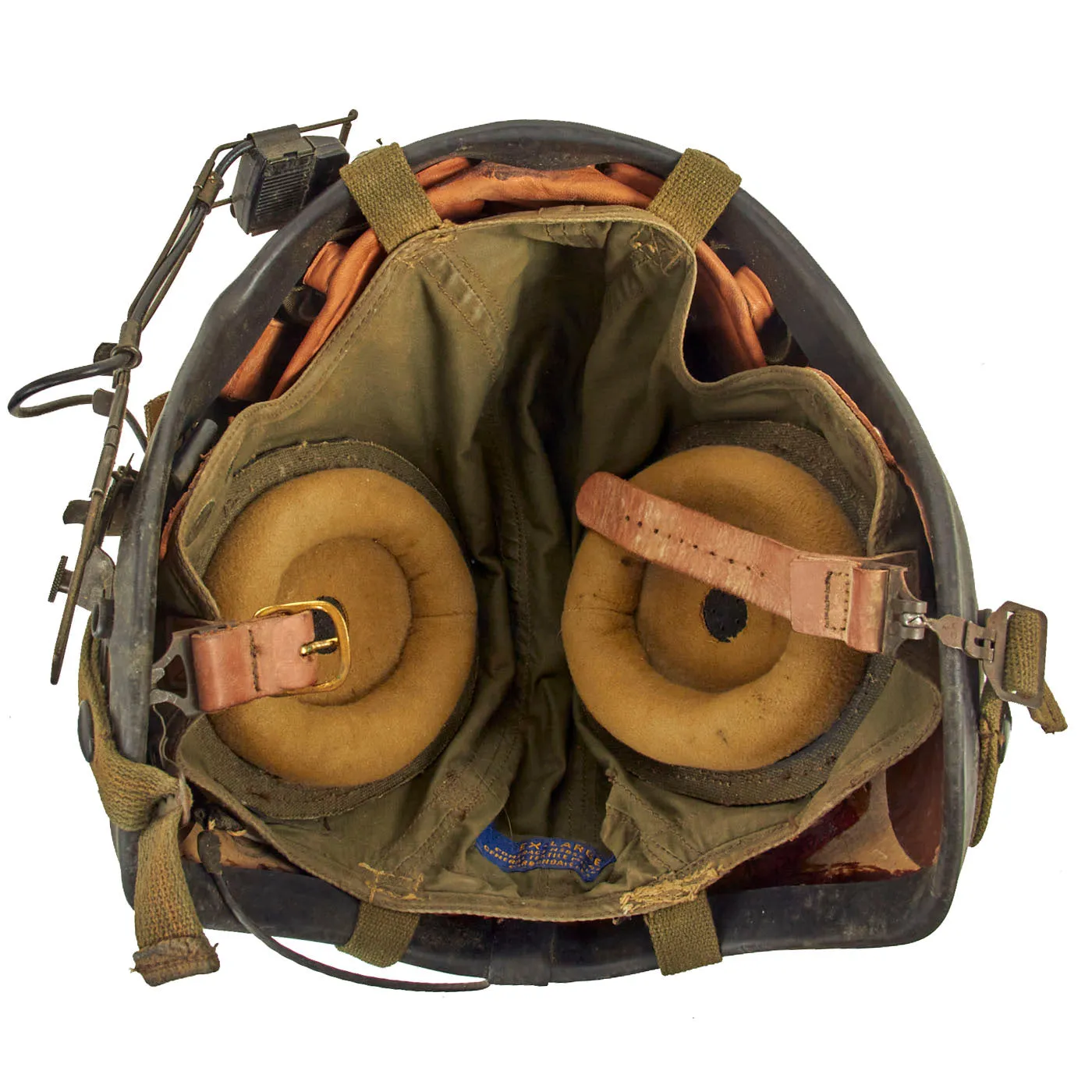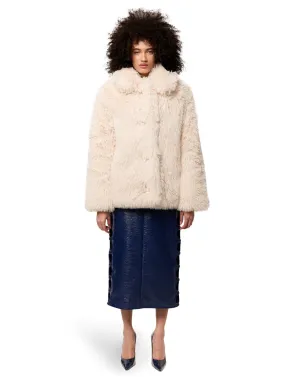Original Items: Only One Available. This is an excellent condition, 1950s USN size “X-LARGE” Gentex H-3 helmet that comes complete with an internal cloth helmet “EX-LARGE” which contains the ear phones and boom mic. Helmet features original gold paint and USN / USMC Aviator wings to front. All parts are in very good to excellent condition. Also included is a wonderful helmet bag which has the pilot’s name rank and branch on a leather name tag:
J. S. HARRIS
CDR (Commander) USN
Unfortunately we have not been able to locate any service information for Commander Harris due to how common his name is.
This is a wonderful example with all components and pieces in great condition! Comes more than ready for further research and display.
By April 1951 the H-3 had been designated as the standard protective helmet and 10.000 helmets were being procured. This first two-piece helmet, the H-3, featured a "breakaway" shell, with a leather shear strap (later modified with a metal ball-hook) designed to permit the outer shell to carry away under high wind-blast forces.
The helmets were painted gold because it was determined that this color provided efficient thermal protection against solar radiation. Other colors would have a tendency to make the helmet warm and therefore uncomfortable to the pilot. It was therefore recommended that no markings that covered larger areas of the helmet shells were applied.
A large number of H-3 helmets were introduced to the fleet, and were later modified with fore and aft stabilising straps connecting liner and shell, and solid, non-shear chinstrap. This stabilising strap arrangement came about when thinking again turned to keeping the helmet attached to the liner, and this modification was widely applied also to the H-4, which became the standard anti-buffet helmet from around 1954 onwards. This did not mean that the H-3 was taken out of service. The two types continued side by side as a sort of Duke's mixture of H-4s and H-3s having H-4 liners. From late 1956 the APH-5 helmet became the primary helmet for high performance aircraft so the H-3 and H-4 were relegated to less glorious use. Both the H-3 and the H-4 were still mentioned in the 1964-dated NAVPERS 10358-B PR training manual. By that time the H-3 and H-4 helmets were primarily used by crewmen in multi-place aircraft. They were no longer under procurement; and when replacement was necessary, they would be replaced by either the SPH-2, the BPH-2, or one of the APH types, whichever was applicable. The H-3 and H-4 were no longer mentioned in the 1967-dated NAVPERS 10358-C. It may therefore safely be assumed that for all intents and purposes the H-3 and H-4 disappeared from USN service between 1964 and 1967.

